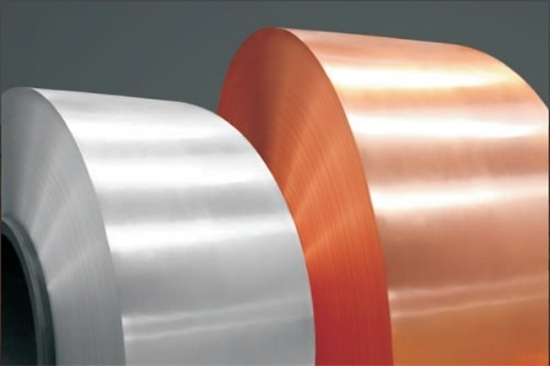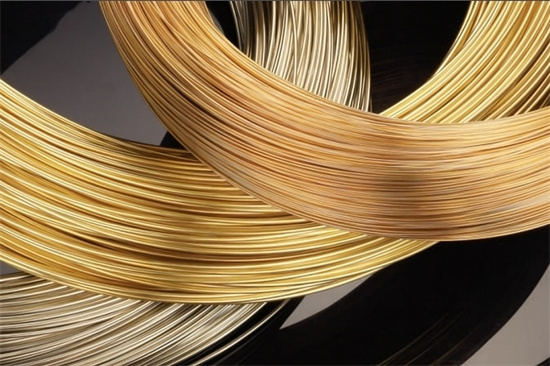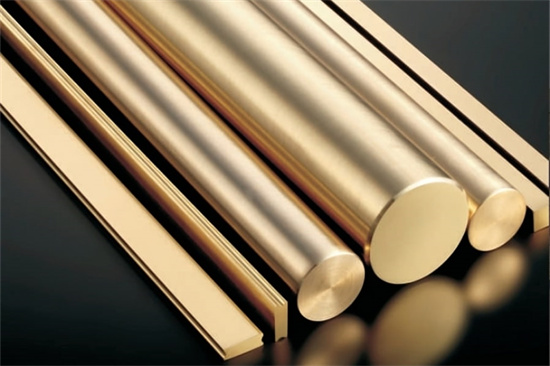


Non-Lead Free Cutting Brass: Unmatched Machinability and Value
Low MOQ
Provide low minimum order quantity to meet different needs.
OEM & ODM
Provide customized products and design services to meet unique customer needs.
Adequate Stock
Ensure fast order processing and provide reliable and efficient service.
Customer Satisfaction
Provide high quality products with customer satisfaction at the core.
share this article
Table of Contents
Brass is one of the most versatile materials in the world of engineering and manufacturing, and it’s been used for thousands of years due to its durability, machinability, and corrosion resistance. However, not all brass is created equal. One specific type that is often discussed in precision engineering is Non-Lead Free Cutting Brass. This material is highly valued for its excellent machinability, making it a go-to choice for creating complex components with high precision. But what exactly is non-lead free cutting brass? What are its properties, applications, and how does it compare to other types of brass?
In this comprehensive guide, we’re going to break down everything you need to know about Non-Lead Free Cutting Brass, from its composition to its applications, and even a comparison with other materials. We’ll also dive deep into its advantages and limitations, so you can make an informed decision whether this material is the right fit for your next project.
Overview: What is Non-Lead Free Cutting Brass?
Non-lead free cutting brass, also known as leaded brass, is an alloy of copper and zinc with a small percentage of lead added to enhance its machinability. The lead makes the brass easier to cut, drill, and shape, which is why it’s often used in applications requiring high precision and fast production rates, such as in the manufacturing of screws, valves, and precision components.
While lead-free brass is increasingly popular due to health and environmental concerns, non-lead free cutting brass (leaded brass) remains a staple in industries where speed, accuracy, and cost-effectiveness are critical.
Here’s a quick look at why non-lead free cutting brass is still widely used:
- Machinability: Lead in the alloy acts as a lubricant during cutting, which reduces friction and extends tool life. This makes it an ideal choice for high-speed machining.
- Cost-Effective: Non-lead free cutting brass is generally cheaper to machine due to its lower friction and wear on tools, resulting in less downtime and longer tool life.
- Versatility: This material is robust enough for a variety of applications, from plumbing to electrical components.
Types, Composition, and Properties of Non-Lead Free Cutting Brass
Non-lead free cutting brass is not a single type of brass; it comes in various grades, each with a slightly different composition to cater to specific applications. Most non-lead free cutting brasses contain around 58-63% copper, 2-3% lead, and the rest zinc.
Common Types and Compositions of Non-Lead Free Cutting Brass
| Brass Type | Copper Content (%) | Zinc Content (%) | Lead Content (%) | Properties |
|---|---|---|---|---|
| C36000 (Free-Cutting Brass) | 61.5-63.5 | 35.5-37.5 | 2.5-3.7 | Excellent machinability, moderate corrosion resistance |
| C37700 (Forging Brass) | 58-60 | 37-40 | 1.5-2.5 | Good strength, used in hot forging applications |
| C38500 (Architectural Bronze) | 57-59 | 39-42 | 2.5-3.5 | Great machinability, good for architectural applications |
| C34500 (Lead-Bearing Brass) | 60-63 | 35-38 | 1.5-2.5 | Slightly lower machinability than C36000, used in castings |
Key Properties of Non-Lead Free Cutting Brass
- Machinability: Lead acts as a chip breaker, making the brass easier to machine at high speeds.
- Corrosion Resistance: While not as corrosion-resistant as some lead-free alloys, non-lead free cutting brass still offers good protection against oxidation and other forms of corrosion in less aggressive environments.
- Tensile Strength: Ranges from 340-500 MPa depending on the exact composition.
- Density: Approximately 8.5 g/cm³, making it a relatively dense and strong material.
Why Lead Makes a Difference
Lead is added to this brass primarily to enhance machinability. It lowers the friction between the brass and the cutting tool, which reduces wear on the tool and allows for faster machining speeds. This is crucial in industries where precision and speed are paramount.
Applications of Non-Lead Free Cutting Brass
Non-lead free cutting brass is widely used in applications where machinability and precision are critical. Because of the lead content, this brass is ideal for high-speed machining and complex component manufacturing.
Common Applications
| Application | Why Non-Lead Free Cutting Brass is Used |
|---|---|
| Screw machine parts | Exceptional machinability for fast and precise production |
| Valves and fittings | High resistance to wear and good sealability |
| Electrical connectors | Good conductivity and machinability for intricate parts |
| Plumbing components | Moderate corrosion resistance and ease of manufacturing |
| Automotive parts | Durable and easy to shape into complex designs |
| Watch components | Precision machining capabilities for small, intricate parts |
| Precision instruments | High accuracy in machining makes it ideal for precision instrument parts |
Expanded Application Insights
- Screw Machine Parts: Non-lead free cutting brass, particularly C36000, is one of the most commonly used materials for automatic screw machines. The lead content allows for high-speed machining without excessive wear on tools, making it ideal for mass production of screws, nuts, and other small parts.
- Valves and Fittings: Non-lead free cutting brass is used in valves and plumbing fittings because it can be easily shaped and threaded. Its moderate corrosion resistance makes it suitable for water systems, although for potable water systems, lead-free brass is becoming the norm.
- Electrical Components: Brass is an excellent conductor of electricity, and its machinability makes it perfect for creating small, precise electrical connectors.
- Automotive Components: Certain automotive parts, such as fuel system components or transmission parts, are made from non-lead free cutting brass due to its high strength and machinability, allowing for the production of complex geometries quickly.
Specifications, Sizes, and Standards for Non-Lead Free Cutting Brass
When selecting non-lead free cutting brass for your project, it’s essential to understand the specifications, sizes, and standards that govern its use. Different industries may require specific grades or standards to ensure that the material meets performance and safety criteria.
Specifications and Standards
| Standard | Description |
|---|---|
| ASTM B16 | Standard for free-cutting brass rods and bars |
| EN 12164 | European standard for rods and wire for free-cutting brass |
| JIS H3250 | Japanese standard for leaded brass |
| DIN 17660 | German standard for brass and bronze alloys |
| ISO 1637 | International standard for brass materials for machining |
Common Sizes and Shapes
| Form | Available Sizes |
|---|---|
| Round Bars | Diameters from 1/8 inch to 12 inches |
| Hexagonal Bars | Across-flats sizes from 1/16 inch to 4 inches |
| Flat Bars | Widths from 1/4 inch to 6 inches, thicknesses from 1/8 inch |
| Square Bars | Sizes from 1/8 inch to 4 inches |
| Wire | Diameters from 0.01 inch to 1 inch |
Sizing Insights
- Non-lead free cutting brass is available in a variety of shapes and sizes, including round, hexagonal, square, and flat bars, as well as wire.
- The ASTM B16 standard is one of the most commonly referenced specifications, ensuring that the material meets the necessary machinability and performance criteria.
Suppliers and Pricing for Non-Lead Free Cutting Brass
Given the widespread use of non-lead free cutting brass in industries like automotive, plumbing, and electronics, there are numerous suppliers globally. Prices can vary depending on factors like grade, size, quantity, and market conditions.
Common Suppliers and Price Range
| Supplier | Location | Price (per lb) | Lead Time |
|---|---|---|---|
| Metal Supermarkets | USA, Canada, UK | $3.50 – $4.50 | 2-4 weeks |
| OnlineMetals | USA | $3.75 – $5.00 | 1-2 weeks |
| Smiths Metal Centres | UK | £2.50 – £3.50 | 2-3 weeks |
| Thyssenkrupp Materials | Germany, Global | €3.00 – €4.50 | 3-5 weeks |
| Righton Blackburns | UK | £2.75 – £4.00 | 2-4 weeks |
Price Insights
- Prices for non-lead free cutting brass tend to range from $3.50 to $5.00 per pound, depending on factors like the size of the order and the specific grade.
- Lead times can vary, particularly for custom sizes or large orders. Generally, expect a lead time of 2-4 weeks from most suppliers.
Advantages and Limitations of Non-Lead Free Cutting Brass
There’s no denying that non-lead free cutting brass has some impressive advantages, but it’s important to balance those against its limitations. As with any material, understanding its strengths and weaknesses can help you determine if it’s the right choice for your project.
Advantages and Limitations
| Advantages | Limitations |
|---|---|
| Excellent machinability | Contains lead, which raises environmental and health concerns |
| Cost-effective for high-speed machining | Less corrosion-resistant than lead-free brass |
| Reduces tool wear and increases tool life | May tarnish over time if exposed to moisture |
| Good strength for complex components | Not suitable for potable water systems |
Key Advantages
- Machinability: This is by far the greatest selling point of non-lead free cutting brass. The lead content makes the material easier to machine, reducing tool wear and allowing for faster production rates.
- Cost-Effectiveness: Because of its ease of machining, non-lead free cutting brass can be more cost-effective than other materials, especially in high-volume production settings.
- Strength and Durability: Non-lead free cutting brass is strong enough for a wide range of applications, from screw machine parts to valves.
Limitations
- Environmental Concerns: The lead content in this material has raised concerns about its environmental impact and health risks. Many industries, especially those dealing with potable water, are moving toward lead-free alternatives.
- Corrosion Resistance: While non-lead free cutting brass does offer some corrosion resistance, it’s not as robust as lead-free brass or other copper alloys. This makes it less suitable for environments where corrosion is a significant concern.
Non-Lead Free Cutting Brass vs. Lead-Free Alternatives
With increasing regulations on lead content in materials, it’s important to consider how non-lead free cutting brass compares to lead-free brass and other alternatives, especially for applications where health and environmental factors are paramount.
Comparison of Non-Lead Free Cutting Brass and Lead-Free Brass
| Property | Non-Lead Free Cutting Brass | Lead-Free Brass |
|---|---|---|
| Machinability | Excellent | Good, but not as fast |
| Environmental Impact | Higher (contains lead) | Lower (no lead) |
| Corrosion Resistance | Moderate | High |
| Cost | Lower | Higher |
| Health Concerns | Yes (lead content) | No |
Machinability vs. Environmental Impact
- Machinability: Non-lead free cutting brass offers superior machinability compared to lead-free brass, making it the better choice for high-speed manufacturing and complex parts.
- Environmental Impact: On the flip side, the lead content in non-lead free cutting brass makes it less environmentally friendly. Lead-free brass is increasingly being used in industries where health and safety are a concern, such as in potable water systems.
Cost vs. Performance
- Cost: Non-lead free cutting brass is generally cheaper to machine, as it reduces tool wear and allows for faster production rates. However, lead-free brass is gaining market share despite its higher cost due to its environmental benefits.
Frequently Asked Questions (FAQ)
Got more questions? Let’s tackle some common questions people have about non-lead free cutting brass.
| Question | Answer |
|---|---|
| What is non-lead free cutting brass used for? | It’s used in applications requiring high precision and machinability, such as valves, fittings, and electrical connectors. |
| Is non-lead free cutting brass safe for potable water? | No, due to its lead content, it is not recommended for use in potable water systems. |
| Why is lead added to brass? | Lead improves the machinability of brass, making it easier to cut, drill, and shape. |
| Can non-lead free cutting brass corrode? | Yes, it has moderate corrosion resistance but is less resistant than lead-free brass in aggressive environments. |
| Is non-lead free cutting brass recyclable? | Yes, but care must be taken to handle and recycle it properly due to its lead content. |
| What is the difference between C36000 and C38500? | C36000 has slightly better machinability and is more commonly used in screw machine parts, while C38500 is often used in architectural applications. |
Conclusion: Is Non-Lead Free Cutting Brass Right for Your Project?
Non-lead free cutting brass remains a top choice in industries where precision machining, cost-effectiveness, and durability are key. While it offers exceptional machinability and can significantly reduce the costs associated with tool wear and production time, it’s essential to weigh these benefits against the environmental and health concerns associated with its lead content.
For applications where speed, accuracy, and volume are critical, non-lead free cutting brass might be your best option. However, for projects that prioritize environmental sustainability and health safety, especially those involving potable water or food-related applications, it’s worth considering lead-free alternatives.
In summary, non-lead free cutting brass offers a unique blend of machinability, strength, and cost-efficiency, but its lead content means it’s not suitable for all industries or applications. The decision ultimately comes down to your specific project needs and priorities.
Maybe you want to know more about our products, please contact us
Get Latest Price
About Met3DP
Product Category
HOT SALE
CONTACT US
Any questions? Send us message now! We’ll serve your request with a whole team after receiving your message.

Metal Powders for 3D Printing and Additive Manufacturing
COMPANY
PRODUCT
cONTACT INFO
- Qingdao City, Shandong, China
- [email protected]
- [email protected]
- +86 19116340731








